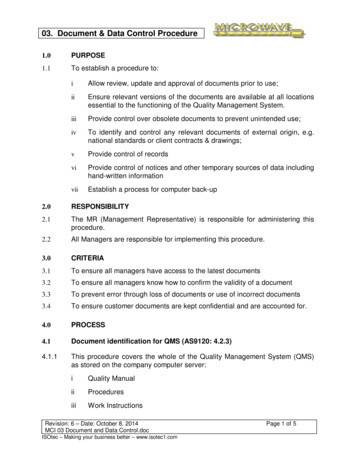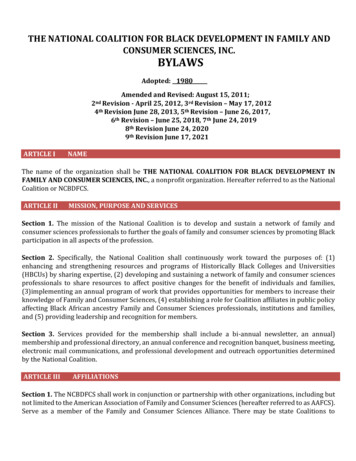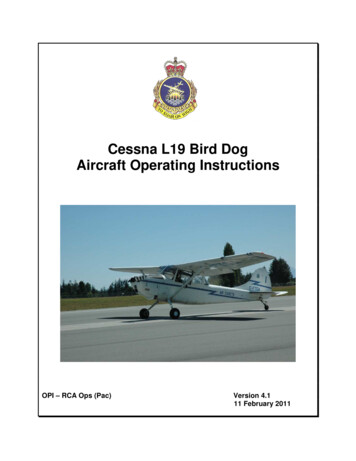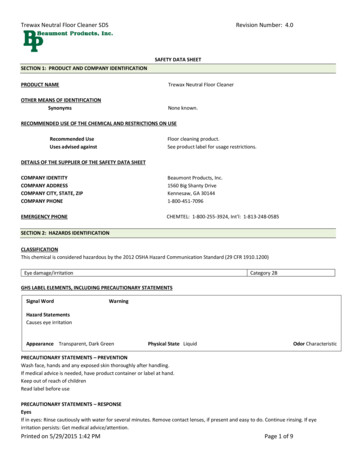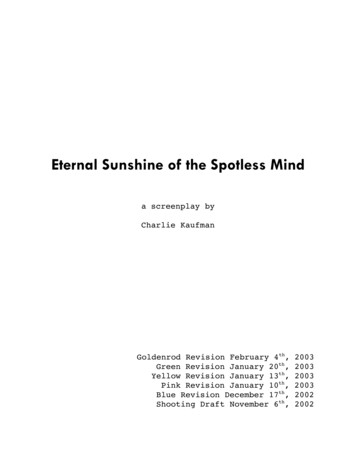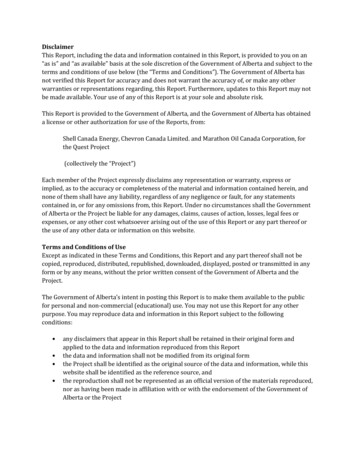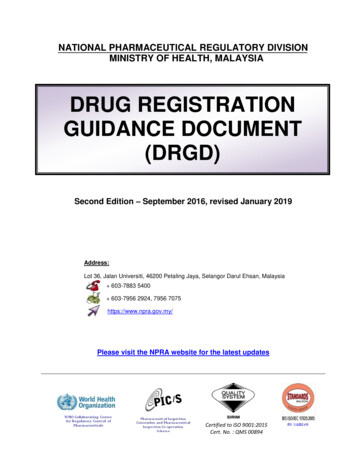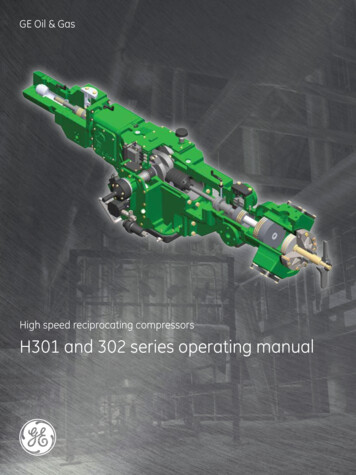
Transcription
Latest revision of this document is available on the internet:http://corporate.husqvarna.com/purchase
HQAP - The Quality Assurance Process forSuppliers to Husqvarna Group ABHusqvarna GroupGlobalTable of contents1 SUMMARY2 INTRODUCTION2.1 Abbreviations used in this document:3 HUSQVARNA QUALITY ASSURANCE PROCESS FLOW CHART3.1 Tooling Approval3.2 Part Approval Process4 HUSQVARNA ADVANCED PART QUALITY PLANNING4.1 Planning and Definition4.2 Part Design and Development4.3 Manufacturing Process Design and Development4.4 Engineering pilot and Design Samples – Pre-series run4.5 Full Run Test - Product and Process validation4.6 PPAP Documents for submission to Husqvarna4.7 Husqvarna approval, Start of serial production & Delivery5 QUALITY ASSURANCE OF SECOND TIER SUPPLIERS AND ASSIGNED PARTS6 PACKAGING AND PALLETS7 FIRST APPROVAL STEP (DESIGN SAMPLE APPROVAL)7.1 Design changes8 TECHNICAL RELEASE9 RELEASED FOR PPAP10 PPAP10.1 When New PPAP is Required10.2 Submission Requirements for Different PPAP levels10.3 PSW - Part Submission Warrant10.4 Initial samples10.5 Laboratory and Functional Testing10.6 Capability Studies – Special Characteristics11 FINAL APPROVAL STEP (PPAP APPROVAL)12 MANUFACTURING PILOT AT HUSQVARNA13 QUALITY DEVIATIONS IN SERIES 617171SummaryThis document contains quality requirements for suppliers to Husqvarna Group and providesexplanation to the Husqvarna quality assurance process and part approval procedure.This document is only controlled and updated in the online version of How We Work – Classification level: InternalOwner: Christian PalmcrantzVersion: 6.0Editor: Christian PalmcrantzApproved: 2019-06-28 by Christian PalmcrantzDocId:HWWDOC-1878489343-418Page 2 of 18
HQAP - The Quality Assurance Process forSuppliers to Husqvarna Group ABHusqvarna GroupGlobal H-APQP is Husqvarna’s method for assuring quality assurance planning and prevention of qualityissues. PPAP approval is required for all new parts and for all changes on existing parts or processes Serial deliveries are only authorized when the supplier has received a signed and approved PSW(Part Submission Warrant) from Husqvarna If the PPAP contains known nonconformities when submitted, this must be clearly stated by thesupplier in the comments section of the PSW and the results box checked “NO”. Additionally acorrective action (e.g. adjustment of tool, correction of process, etc.) must be included in thedocument package. If the PPAP is rejected the supplier is responsible of prompt actions to correct nonconformitiesand to submit new PPAP. If PPAP is interim approved the parts can be accepted for a limited quantity or period of timeduring which a new PPAP must be submitted by the supplier well before expiration of the interimPPAP. Parts for PPAP must be produced using serial equipment (including part specific fixtures, gauges,instruments and other equipment) and with documented serial procedures.2IntroductionHusqvarna in this document is referred to any company that is part of the Husqvarna Group.The purpose of this document and routine is to support suppliers with their quality assurance process,and to describe the approval process for parts delivered to Husqvarna Group. By using the toolsdescribed in this document improved quality, and thereby lower total cost for all parties, are facilitated.Suppliers to Husqvarna must follow the quality assurance process described in this document. Thefundamentals of this process are based on APQP1 and PPAP2, published by AIAG, which arereference manuals to the standard ISO/TS 16949 as well as Husqvarna specific requirements.ISO/TS 16949 is originally a quality standard for suppliers in the automotive industry.2.1Abbreviations used in this document:AIAGAutomotive Industry Action Group (www.AIAG.org)1For more information see “APQP Handbook” on www.aiag.org2For more information see “PPAP
3 HUSQVARNA QUALITY ASSURANCE PROCESS FLOW CHART 4 3.1 Tooling Approval 4 3.2 Part Approval Process 4 4 HUSQVARNA ADVANCED PART QUALITY PLANNING 6 4.1 Planning and Definition 7 4.2 Part Design and Development 7 4.3 Manufacturing Process Design and Development 7 4.4 Engineering pilot and Design Samples - Pre-series run 8

